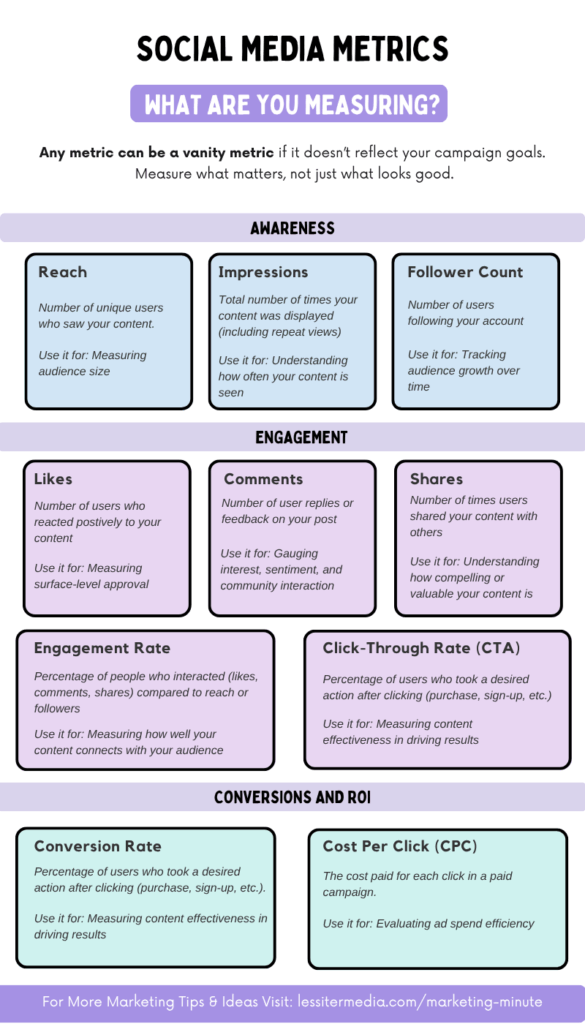
By Olivia Cox
Content Marketing Specialist, Lessiter Media
ocox@lessitermedia.com
262-782-2443
While evaluating social media performance data is a great practice in general, it’s important to ensure that the metrics you’re analyzing actually correlate with your specific goal. Without clear alignment, even the most robust-looking data can lead you in the wrong direction. For instance, a post with high engagement might feel successful at first glance, but if your goal was to drive conversions or generate leads, likes and shares alone may not tell the full story.
Vanity metrics—such as follower counts, impressions, or video views—often look impressive on the surface but don’t always represent meaningful progress toward business objectives. This isn’t to say these metrics are inherently bad, but when taken out of context or used in isolation, they can distract from what really matters. Any metric can become a vanity metric if it fails to measure the right outcome. For example, growing your audience size is valuable only if that audience is engaged and likely to act on your messaging.
To help you cut through the noise, we’ve outlined and defined some of the most common social media metrics below. From engagement rate and click-through rate to conversion metrics and cost per acquisition, understanding what each metric means—and when it’s most relevant—can help you focus on data that reflects the true success of your marketing efforts. Use this guide to ensure your social strategy is not only data-informed but also goal-driven.


